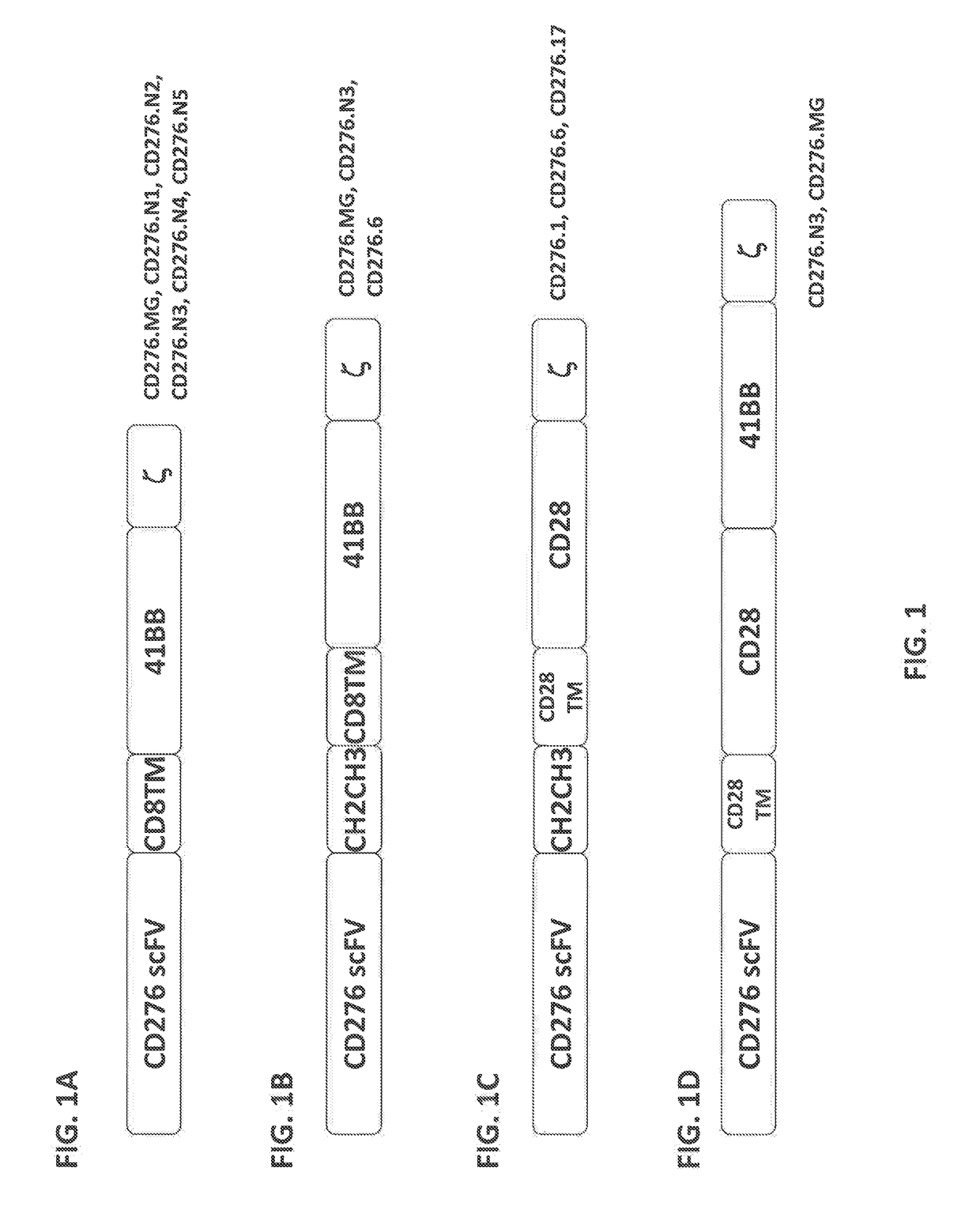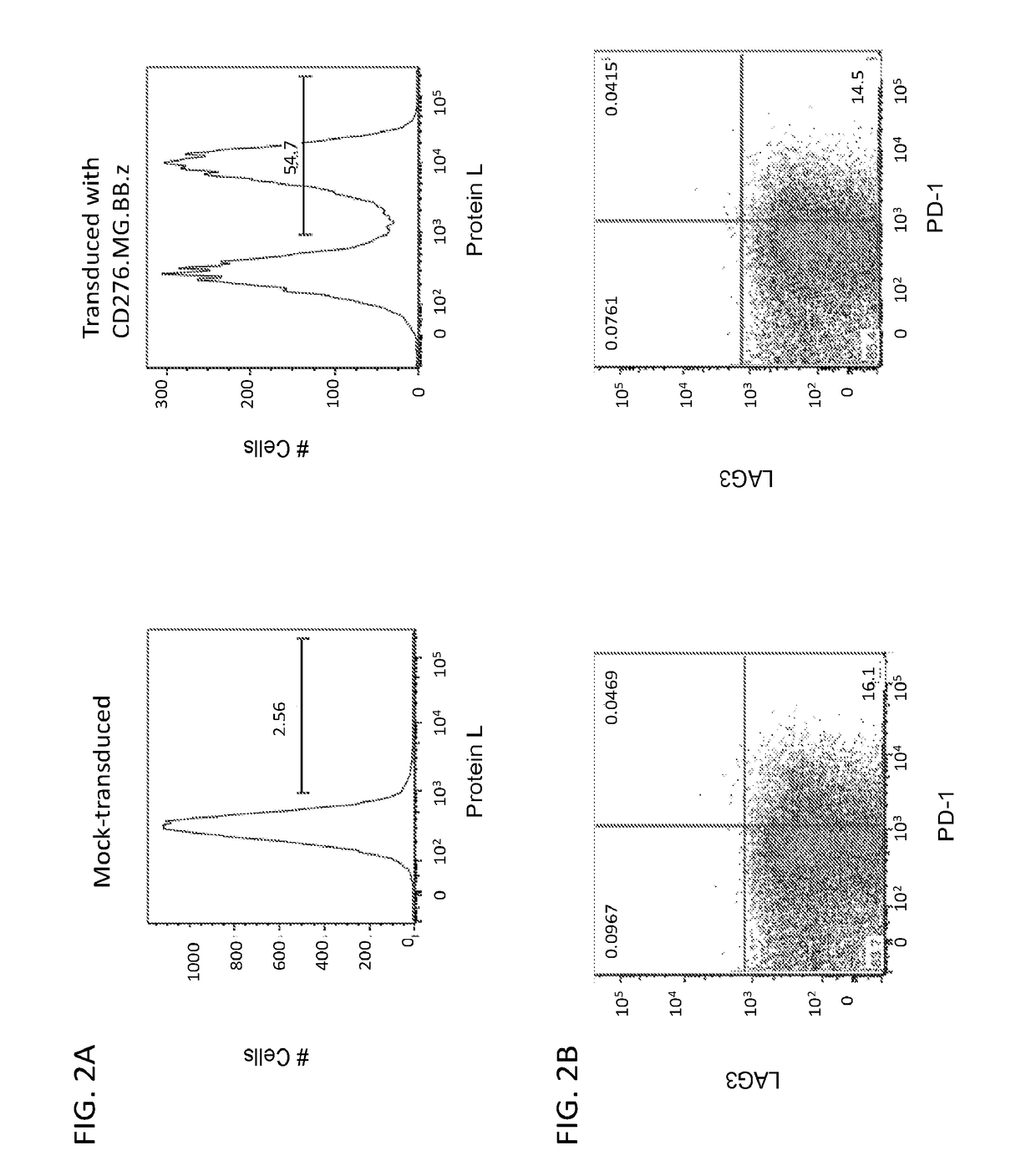Anti-cd276 chimeric antigen receptors
- Summary
- Abstract
- Description
- Claims
- Application Information
AI Technical Summary
Benefits of technology
Problems solved by technology
Method used
Image
Examples
example 1
[0098]This example demonstrates that cells transduced with a retrovirus encoding the CD276.MG.BB.z CAR (SEQ ID NO: 12) are efficiently transduced and express the CAR.
[0099]Human T cells were activated with anti-CD3 / CD28 beads, then transduced with a retroviral vector encoding the CD276.MG.BB.z CAR (SEQ ID NO: 12) (FIG. 1A). Efficient transduction and CAR expression was demonstrated by binding to protein L (FIG. 2A). Protein L is a bacterial protein that specifically binds to the light chain of immunoglobulin. Therefore, the binding of a cell to protein L identifies cells expressing a scFv, which includes a light chain variable fragment.
example 2
[0100]This example demonstrates that cells transduced with a retroviral vector encoding the CD276.MG.BB.z CAR (SEQ ID NO: 12) show no evidence of early exhaustion as assessed by LAG3 and PD-1 expression.
[0101]Human T cells were transduced with a retroviral vector encoding the CD276.MG.BB.z CAR (SEQ ID NO: 12) as described in Example 1. LAG3 and PD-1 expression on the transduced cells was measured by flow cytometry. An absence of LAG3 expression and an absence of high level PD-1 expression was observed, indicating that the transduced T cells showed no evidence of early exhaustion as measured by LAG3 and PD-1 expression (FIG. 2B).
example 3
[0102]This example demonstrates the robust expansion of the numbers of cells transduced with a retroviral vector encoding the CD276.MG.BB.z CAR (SEQ ID NO: 12) when maintained in culture following transduction.
[0103]Human T cells were transduced as described in Example 1 with a retroviral vector encoding one of the CARs shown in FIG. 3, one of which was the CD276.MG.BB.z CAR (SEQ ID NO: 12). The GD2 OX40Z CAR contained the antigen binding domain of an anti-GD2 antibody, the OX40 intracellular T cell signaling domain, and the CD3f intracellular T cell signaling domain. The CD19 28BBZ CAR had the structure shown in FIG. 1D with the exception that the anti-CD276 antigen binding domain was replaced with an anti-CD19 antigen binding domain. The CD19 BBZ CAR had the structure shown in FIG. 1A with the exception that the anti-CD276 antigen binding domain was replaced with an anti-CD19 antigen binding domain.
[0104]The transduced cells were maintained in culture for up to eight days. The num...
PUM
| Property | Measurement | Unit |
|---|---|---|
| Composition | aaaaa | aaaaa |
Abstract
Description
Claims
Application Information
 Login to view more
Login to view more - R&D Engineer
- R&D Manager
- IP Professional
- Industry Leading Data Capabilities
- Powerful AI technology
- Patent DNA Extraction
Browse by: Latest US Patents, China's latest patents, Technical Efficacy Thesaurus, Application Domain, Technology Topic.
© 2024 PatSnap. All rights reserved.Legal|Privacy policy|Modern Slavery Act Transparency Statement|Sitemap



